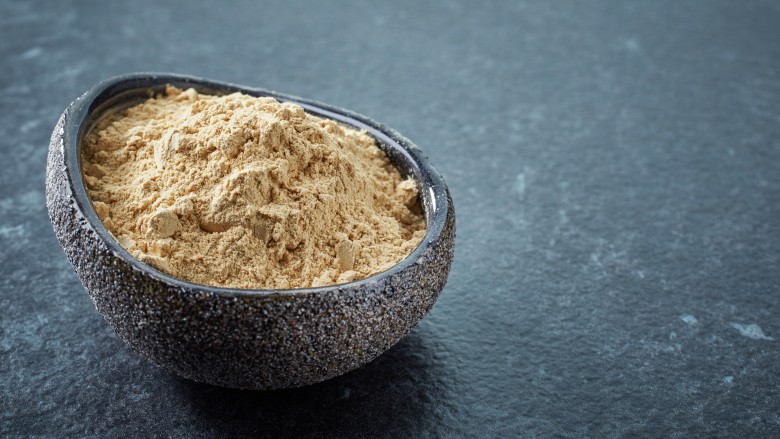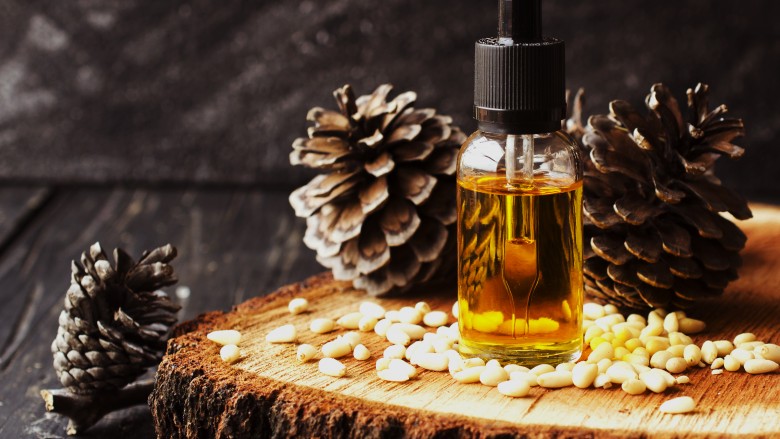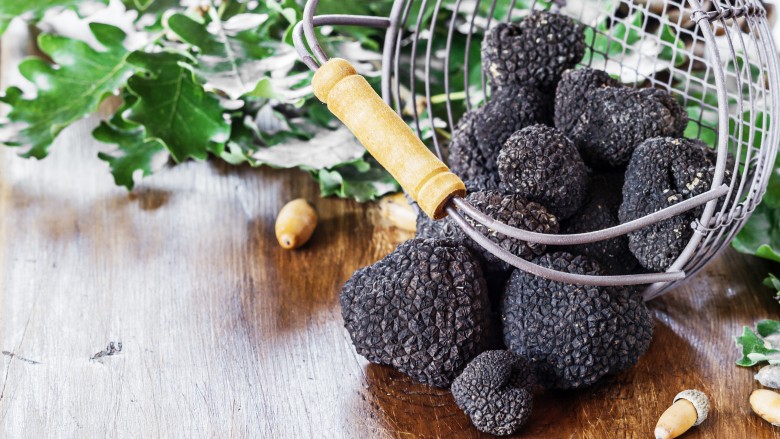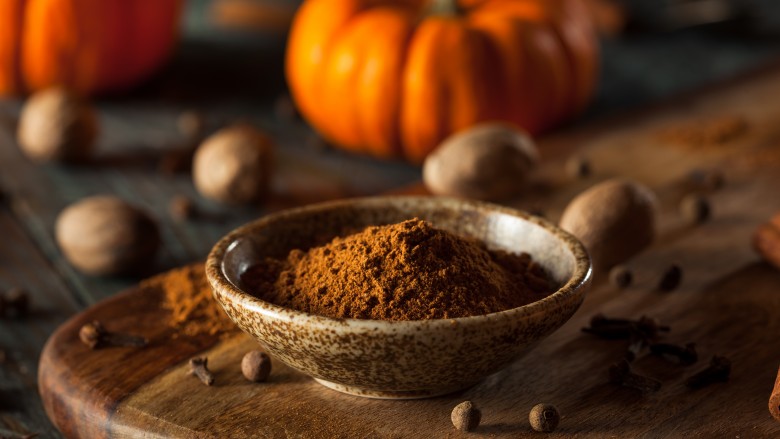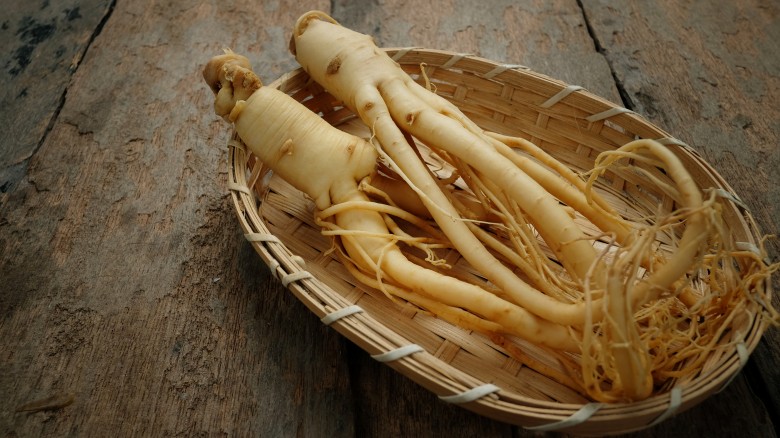11 Aphrodisiacs To Spice Up A Romantic Meal
Whether you're looking to make a special meal for Valentine's Day, Sweetest Day, or, even better, Tuesday, throwing in some tried-and-true aphrodisiacs might just take your special dinner to a whole new level. The science is still out on some of these foods, but each one claims a long history of kick-starting the amorous intentions of those who partake. Even if you're skeptical about the science, there's no denying that taking the time to prepare a special, sensuous meal that's completely unlike your regular weekly favorites is one of the most romantic things you can do.
Chocolate
Chocolate is perhaps the best-known aphrodisiac. While the science is still out on whether chocolate can really give your libido a boost, it has been claimed that chocolate contains some powerful stuff.
According to a review from the Centre for Food Quality in the U.K., eating chocolate reportedly gives you a heaping dose of phenylethylamine, which acts on the hypothalamus to boost your mood and heighten the effects of pleasurable sensations. That's obviously where some of the aphrodisiac claims come in, as the neurotransmitters released by the brain in response to the chemical are the same ones that are released when we feel things like love and lust. It's also thought that the same chemicals in chocolate are responsible for raising heart rate and supplying an energy boost, and some claim that they even feel a bit of euphoria after indulging.
While science still bickers over whether or not chocolate is scientifically an aphrodisiac, history has its own opinion. The earliest references we have to the consumption of chocolate comes from the Aztecs and the Maya, and according to the records of the Spanish conquistadors, Montezuma would drink huge amounts of chocolate before heading off to visit his harem. If it's good enough for him, it's good enough for you!
There are a million and one different recipes that use chocolate for dessert, but what about doing something a little different? Try using chocolate in some of your savory main courses. If you're feeling skeptical, try this recipe for cocoa-rubbed baby back ribs or this triple chocolate beef and bean chili for an even bigger dose of everyone's favorite aphrodisiac.
Maca
Never heard of maca? Well, then you heard it here first!
Maca is the root of a plant that grows in the harsh climate of the Peruvian Andes. For more than a thousand years, it's been cultivated by local farmers as a food source for both people and livestock. According to Spanish explorers writing around the mid-17th century, it wasn't just used for food; it was used as a fertility-increasing stimulant.
It was only in the early 21st century that science started looking at just what maca is, and what potential benefits there may be to adding it to your diet. A handful of studies have been done, and they've found that maca might also be linked to increased stamina and a boost in mood. Some studies support claims that maca helps boost libido and manages hormones. History certainly says yes, as the Incan farmers who first grew the plant and fed it to their livestock noticed a jump in the fertility of their herds.
So now you're wondering how you use maca. It's most commonly found in powder form, and to get the most of its benefits you can add it to your morning smoothies. You're here to find out about a romantic dinner, though, so how about this recipe for some maca guacamole (which uses avocado, another aphrodisiac) or a maca coconut whip strawberry sundae for dessert?
Avocado
You might already have avocado in mind with the mention of maca-infused guacamole, and there's a fascinating history behind the aphrodisiac qualities in this one, too. The Aztecs discovered the potential of the avocado, and they even gave it a name — ahuacatl — that referred to the male body part the avocados resembled when they were hanging from the tree in pairs. Like chocolate and maca, it was the Spanish who first introduced the avocado to the rest of the world, but it wasn't called the avocado just yet.
The Spanish still knew it as the ahuacate, and it wasn't until the early 1900s that American farmers gave the fruit a much-needed makeover that elevated it from obscurity. They adapted the Aztec name (which they had a hard time pronouncing) and ditched its other name — the alligator pear — and rebranded it to what we know today. Most of its aphrodisiac qualities come from its appearance, but there's also something to the idea that eating fruits like the avocado increase the levels of nitric oxide in the blood, which in turns helps keep blood vessels healthy and then leads to all sorts of well-being.
If you're looking for some new ways to include avocado in your romantic meal-for-two, how about grilled avocados with ginger miso as a starter?
Pine nuts
Pine nuts have an ancient history, with records of their importance dating back to 300 B.C. There are 18 different species of pine trees that yield pine nuts edible to humans, and yes, they're hidden deep in pinecones. That makes getting them out incredibly labor-intensive, which explains the price tag. They're different whether you're in Asia, Europe, or America, but one thing that's standard across the board are their reputed aphrodisiac qualities.
Both the Greeks and the Romans wrote about how successful adding pine nuts to the diet was for getting rid of any bedroom woes, and the ancient physician Galen even wrote that after three days of eating a mixture made from 100 pine nuts, 20 almonds, and some honey, all would be well in the nighttime festivities department. The idea was a long-lasting one, with medieval English recipes calling for bread made with honey and pine nuts to be used to encourage ye olde merrymaking, and pine nuts were often used medicinally across India, in order to fix any problems with libido.
Fortunately, we don't have to just rely on counting out 100 pine nuts any more, and this is one ingredient that makes a healthy (if expensive) addition to any side dish. Try whipping up some roasted cauliflower with dates and pine nuts, or if you prefer broccoli, try this recipe with garlic and pine nuts. They're both light sides that won't contribute to the "ate-too-much" feeling, which helps if romance is on the mind.
Truffles
If you're willing to make the monetary investment of adding truffles to a romantic meal, you're going to be following in the footsteps of the ancient Greeks and Romans. They were the first to call the strange-looking fungi an aphrodisiac (while those in the Middle East valued it for its purported medicinal qualities). According to a more modern interpretation of what's going on with truffles, it all has to do with scent. The theory goes that pigs are so good at finding truffles because their smell is similar to that of the male pheromone, and those pigs are really being attracted by that. They're not the only ones, as reportedly even Napoleon swore by the influence of truffles.
Truffles are so expensive because of how difficult they are to grow, and for years, prospective truffle farmers have been stumped as to just why their truffle crops weren't taking. Even the British royal family has been foiled at their attempts at growing truffles, and it was only in 2010 that scientists figured out what's going on. Given their reputation as an aphrodisiac, it's pretty appropriate.
Truffles are one of the few types of fungi that reproduces sexually, rather than via self-fertilization or spores. They grow in underground colonies that tend to be entirely male or entirely female, so it's tough to get them to reproduce. In their natural habitat, they're likely fertilized by animals that carry spores between colonies, and that explains why attempts to raise them in a more artificial environment have largely failed.
If you're looking for a truffle recipe to try, why not show off your cooking chops with a black truffle risotto? Black truffles, white wine, and a hint of lemon? Sign me up!
Watermelon
You've probably heard that things like chocolate and oysters are aphrodisiacs, but watermelon? Yes! And science is testing out the claims.
Texas A&M's Fruit and Vegetable Improvement Center took a look at what's in watermelon, and they found that it contains something called citrulline. It's a phytonutrient that has the ability to relax blood vessels. While it's not specific, researchers suggest that it can even have a Viagra-like effect without any potential side effects. (It also boosts heart health and the immune system, and helps remove things like ammonia from the bloodstream.) And it contains lycopene, a compound once thought to only be in tomatoes, which is valued for its ability to protect the heart and the prostate.
But if you're planning on adding a traditional slice of watermelon to the dessert menu, hold on. Citrulline is found mostly in the watermelon rind, and fortunately, there are some fun things you can do with it. If you've never considered making watermelon rind pickles, start considering it. Give this recipe from Epicurious a shot (but plan a few days in advance), and you'll have a tasty side dish for your romantic dinner.
Asparagus
If you're thinking that asparagus, notorious more for its smell than any kind of romantic qualities, is unlikely to get you in the mood for anything other than skipping your vegetables, years and years of history beg to differ. Visit an Ayurvedic shop and you'll probably find a whole bunch of dried asparagus, sold in a dried or powdered form that allows practitioners to avail themselves of asparagus's aphrodisiac properties no matter what the season.
In Germany, asparagus is the vegetable associated with the springtime. (Think birth and fertility season.) Spargelzeit is a two-month span of time (about the end of April to the end of June) where asparagus is everywhere. It's in such high demand that farmers cultivate early crops of white asparagus, grown from sprouts that are buried, deprived of chlorophyll, and completely white. Lauded for their aphrodisiac properties, they're usually served with wine.
If you're a little suspicious of this odd-looking vegetable you probably hated as a child, don't fret. There are plenty of options for working it into your dinner plans. You've probably seen it oven-roasted in about a hundred and one different ways, but instead, try shaving it into strips for a tasty ribboned asparagus salad with avocado dressing. The Guardian has a handful of recipes that include everything from salads and soups to frittatas, guaranteeing something for even the most cynical diner.
Pumpkin spice
There's no denying that pumpkin spice can get a little overdone in the fall months, and it certainly didn't take long for the flavor to spread from coffee to everything else imaginable. Guesses as to how it managed to capture the public's taste buds range from a simple association with the welcoming of the autumn and holiday seasons to it being the right combination of something familiar, yet different.
Some scientific research, however, suggests that pumpkin spice may be a pretty powerful aphrodisiac. Researchers from the Smell & Taste Treatment and Research Foundation in Chicago wanted to know whether or not the folk stories of certain scents impacting desire and arousal had any truth to them, so they found a way to measure exactly that. They found that the most consistent reaction was to the smell of a combination of lavender and pumpkin pie. Just like many of the world's well-known aphrodisiacs, some research has backed up the idea while plenty of critics have come out against the findings.
Are you so sick of pumpkin spice anything that you're already cringing a little? Well, give it a shot in your romantic meal plans. (Besides, chocolate desserts will make you feel way too full.) Get creative and try a lighter, pumpkin spice-themed dessert, like these pumpkin cheesecake bars, or this pumpkin spice latte tiramisu.
Beetroot
Is beetroot the only thing that can possibly make you cringe more than asparagus? Don't worry, there's one way that you can sneak beetroot into a meal and no one will ever be the wiser.
First, the aphrodisiac part. Belief in beetroot as a powerful aphrodisiac dates back to ancient Greece and Rome. Apollo received offerings of beetroot, while Aphrodite (who gave her name to the very idea of the aphrodisiac) was often said to eat beets in order to preserve her youthful appearance. When archaeologists and historians finally got a look at some of the murals painted on the walls of the brothels of Pompeii, they thought the incredibly well-preserved paintings depicted people drinking wine. Now, they think they were drinking beetroot juice.
Now, how on earth are you supposed to slip this one into a meal? Simple! The same way those ancient brothel-goers from Pompeii consumed it: in drink form.
This one takes a bit of advance planning, but making your own beetroot wine is absolutely worth the time investment. It's fairly easy, especially if you follow this recipe for spiced beetroot wine. While you can drink it almost right away, leaving this in a dark demijohn to age for up to a year turns it into something completely different. If you don't want to wait quite as long, try this recipe for a beetroot mead. Made with honey and star anise, it's guaranteed to be the perfect accompaniment to any meal.
Ginseng
Ginseng is something of a miracle herb, and plenty of claims have been made about the health benefits of adding ginseng to your diet. The more formal name of the herb, Panax ginseng, gives a hint at just how important it is in traditional Chinese medicine. "Panax" means "all-healing," and that's a lofty claim to live up to. It's said to be an antioxidant and an immune system booster, thought to help increase endurance and lower stress, and it's also been claimed to have a Viagra-like effect and to increase fertility.
According to a study from the University of Hong Kong, ginseng was shown to increase libido and performance, along with fertility, in both animal and human trials. The compounds thought to be responsible are called ginsenosides, and they're so potent that ginseng is sometimes prescribed on its own to help with those having fertility issues.
Taking a supplement isn't very romantic, though. Fortunately, there are all kinds of different ways you can use ginseng in a meal more appropriate for romance. Try this chicken-ginseng soup for a starter, a guaranteed hit if you're looking for something with a warm, slightly spicy flavor. And if you're looking for something even more unique, what about this chrysanthemum ginseng wolfberry jelly with raw honey for dessert? Romantic meals should be something special, so don't be afraid to try something new.
Champagne
Champagne as we know it has a fairly short history, and there's a good reason it's associated with special occasions. It's made for celebrations, with its roots in the unification of the French nation. It has an impressive pedigree as the drink of choice at weddings, too, so the romantic appeal of a glass of bubbly is well-documented. It's also said that there's something to the whole ritual of serving champagne. That or you're with a special person, which can be a powerful aphrodisiac in itself.
There's some scientific support for some of the claims. Researchers from the University of Manchester found that carbonation in alcoholic drinks sometimes causes faster absorption. So champagne might remove your inhibitions faster, something the Center for Optimum Health's Dr. Allen Green calls "giddy effervescence." Other research found that champagne contains nitric oxide, and while that might not sound very romantic, it is something that the body uses to keep blood vessels healthy and the blood flowing.
What if you aren't a fan of champagne? Try a champagne cocktail, like the tried-and-true mimosa. There are plenty of other recipes out there, and Esquire suggests things like a black velvet (half stout, half champagne) or the aristocrat sparkling punch (a cocktail that combines red burgundy, brandy, sugar, and strawberries with the fizz of champagne). Once you try it, you may never come up with a better way to put the finishing touches on that romantic night in.


